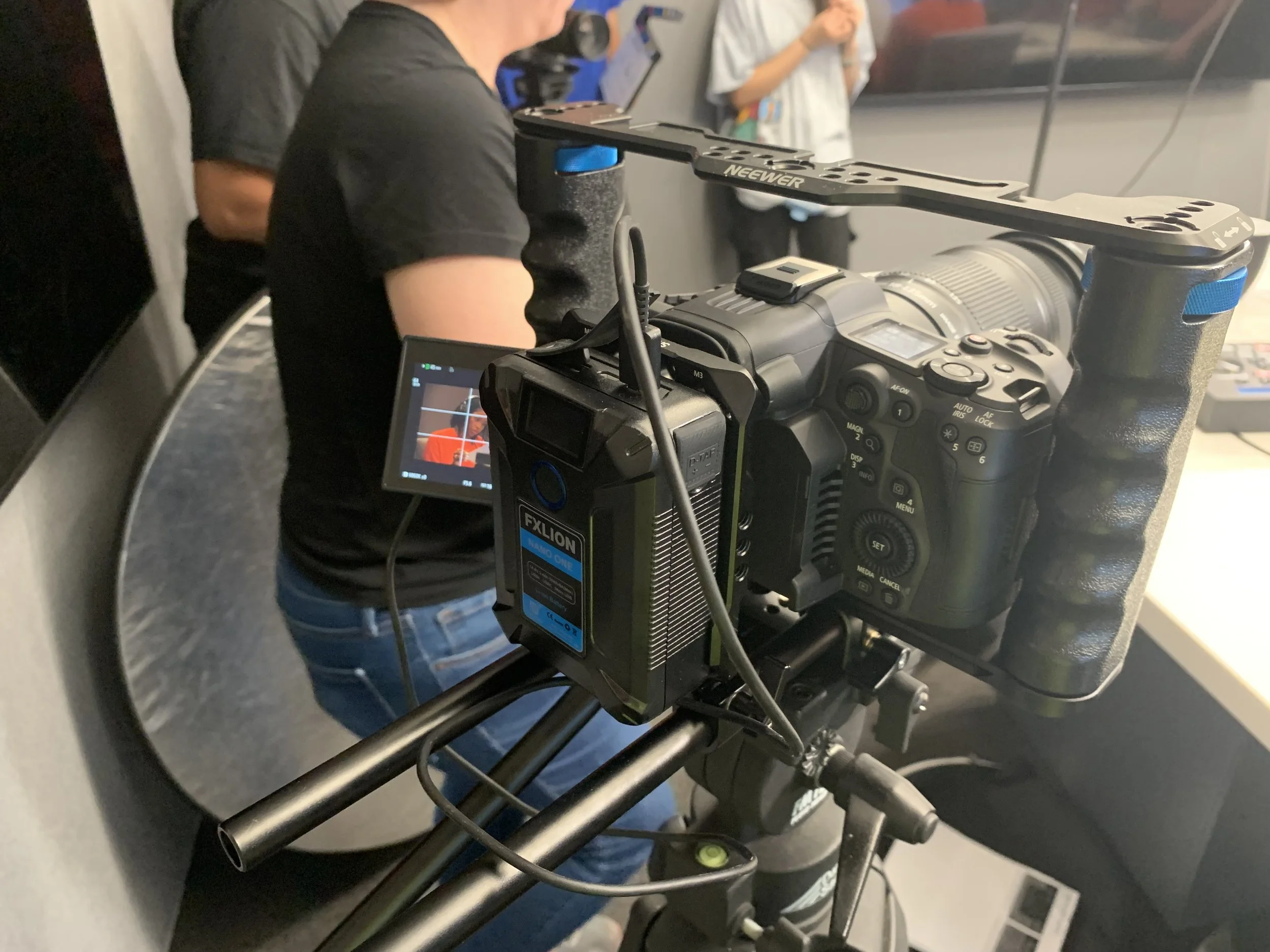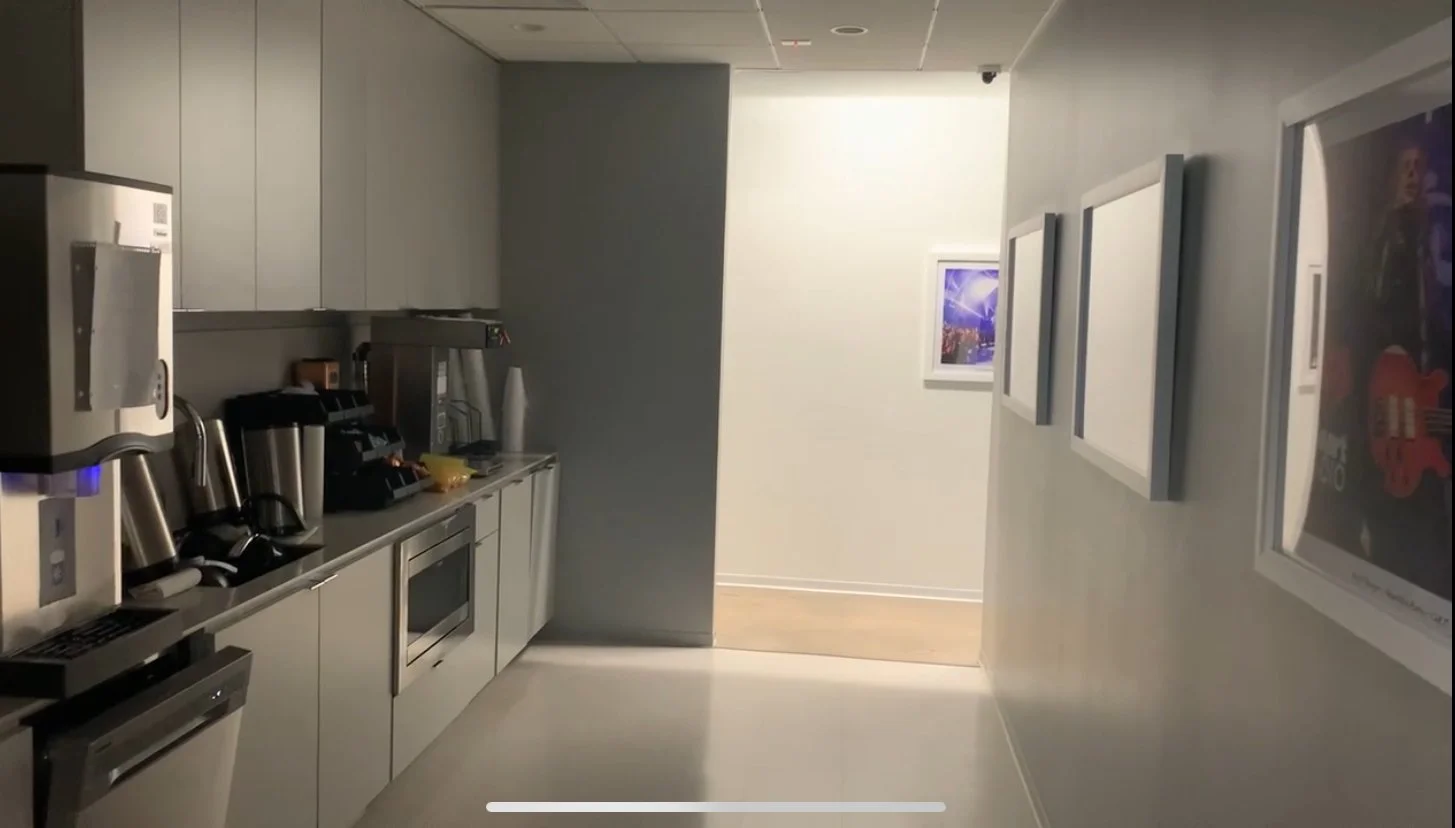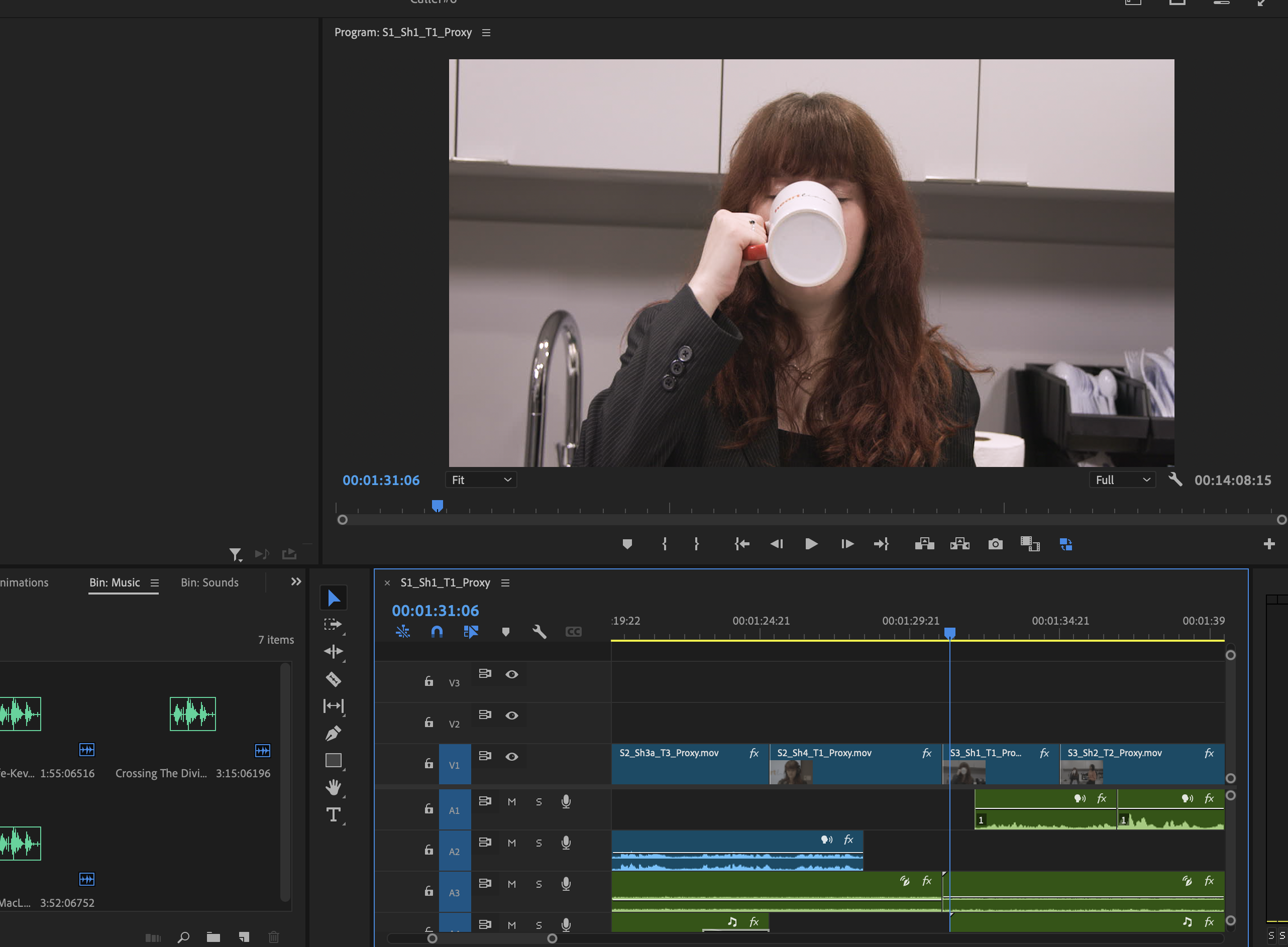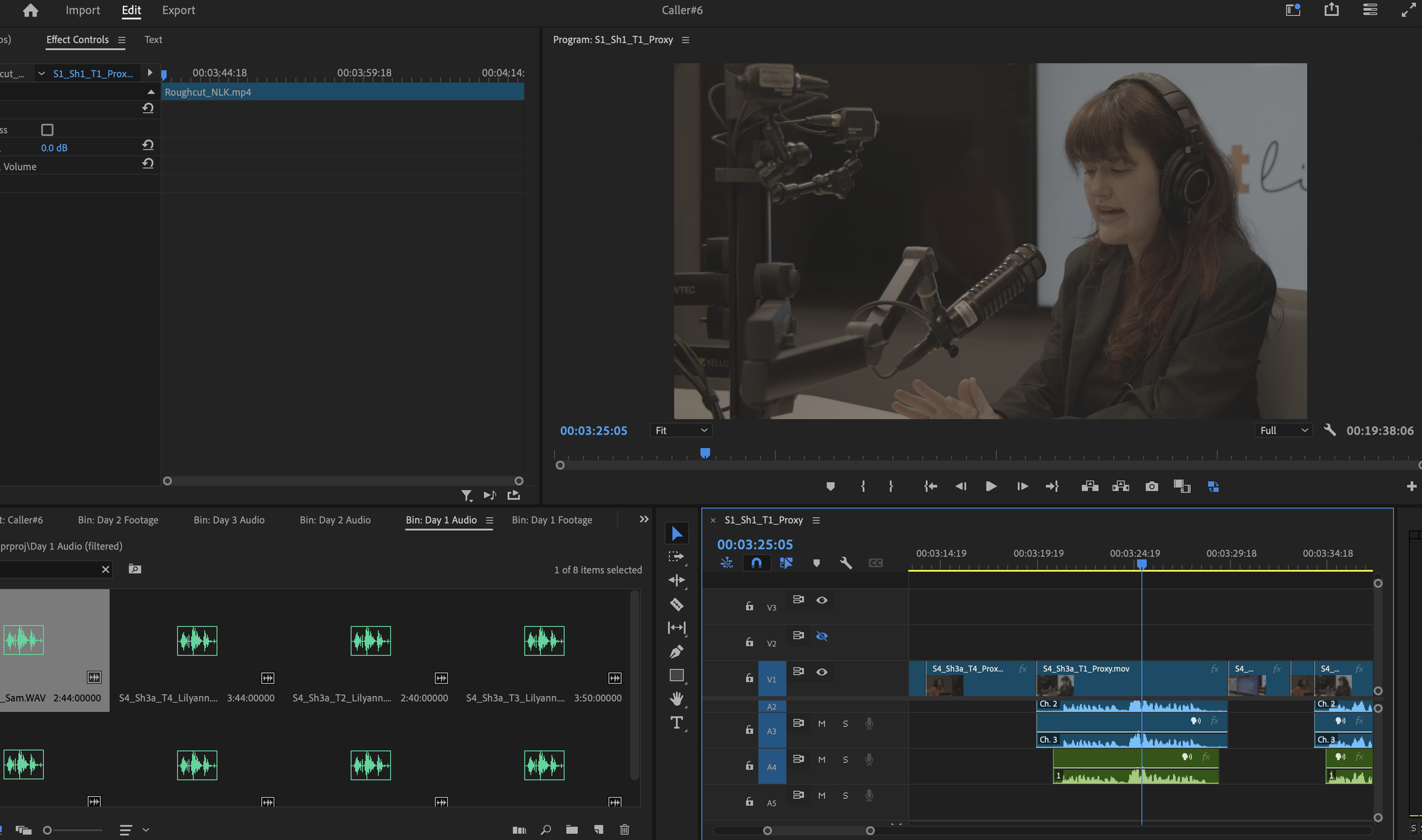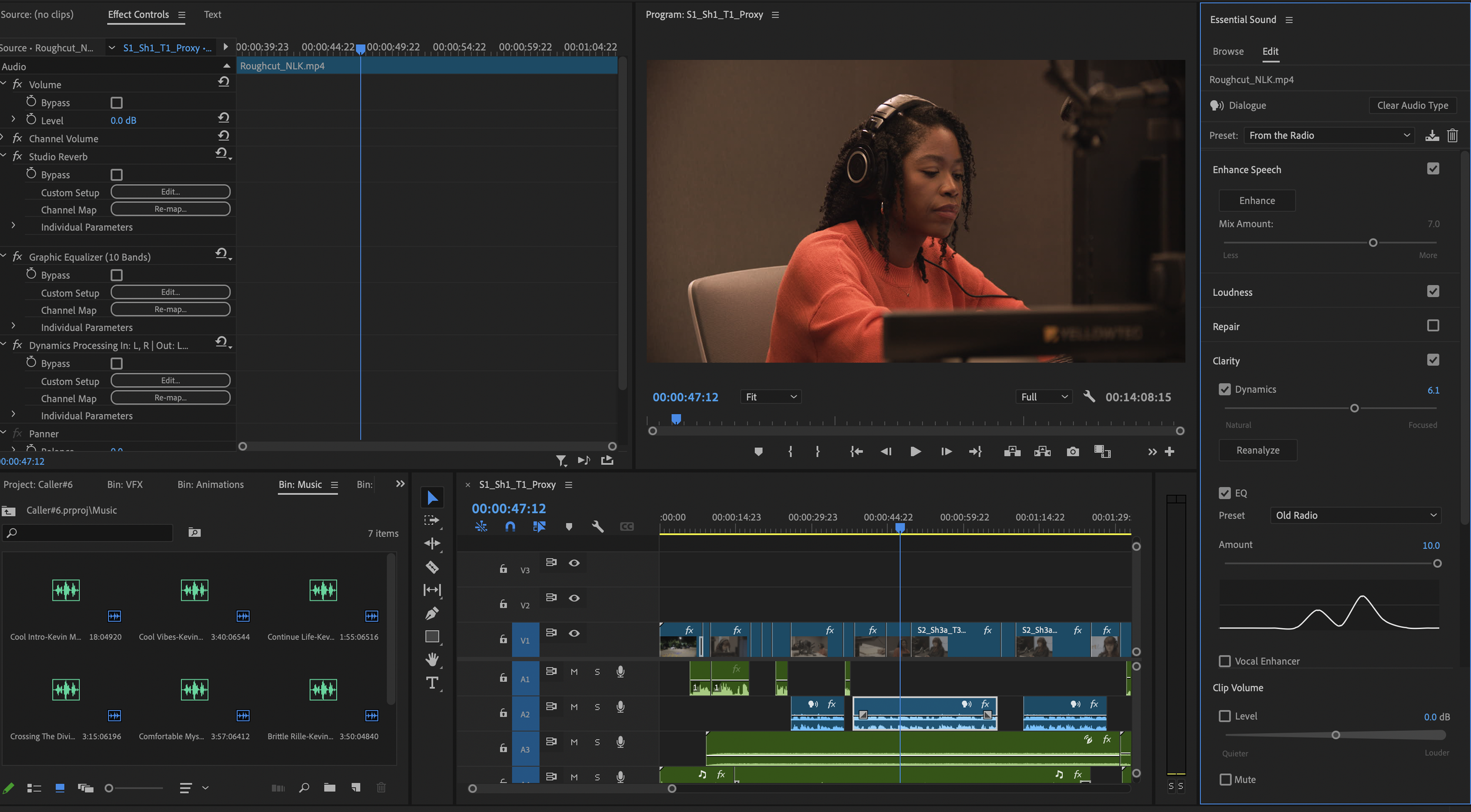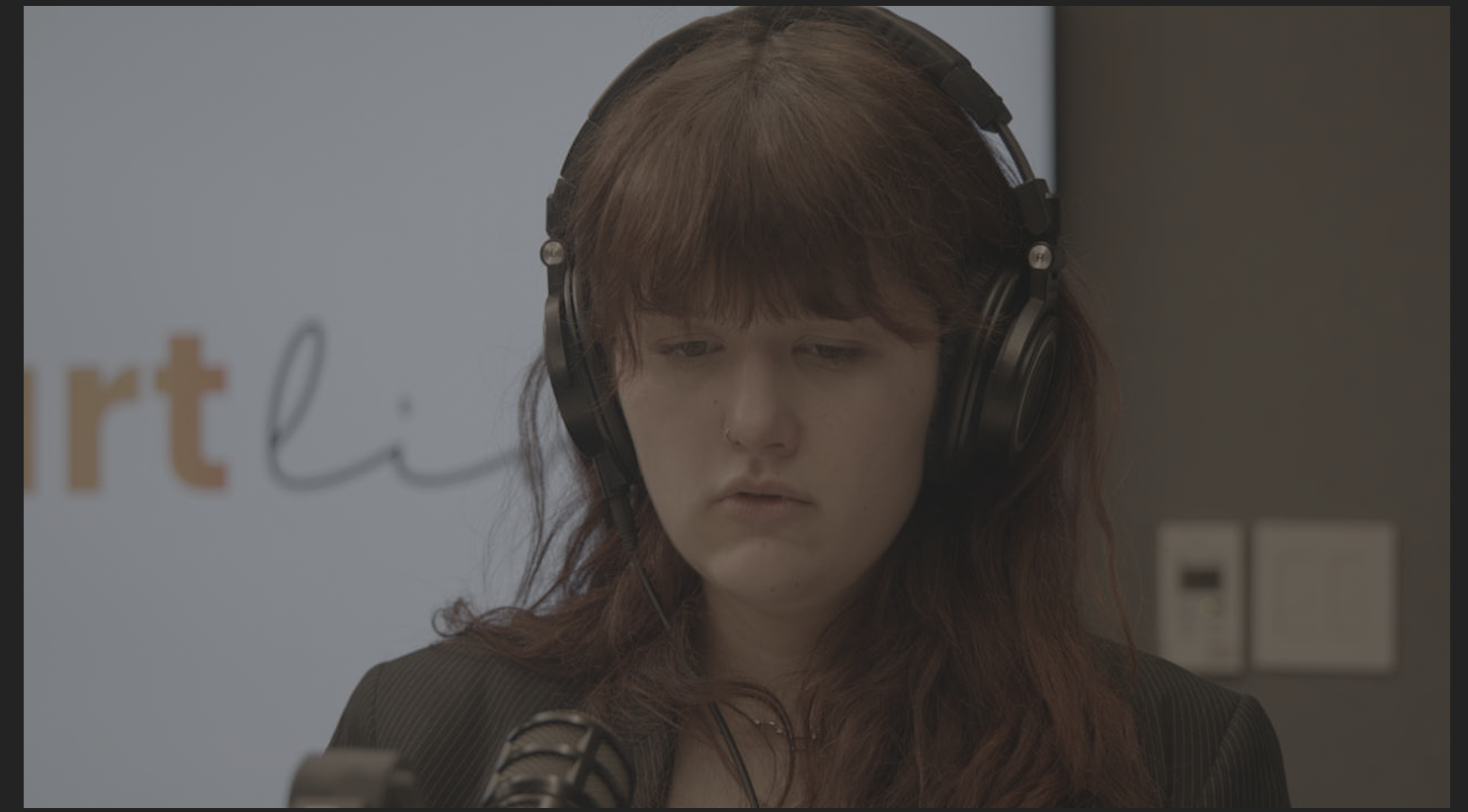Caller #6 - Production Documentary
Caller #6 is my first short film. I hope to use this blog to document my experience during the production, from Pre-Production to the final film. My role within the crew was as a camera operator.
I had loose involvment before on-set production started, mostly just as a means to familiarize us with the story and concept. It also allowed me to get familiar with the rest of the crew. We also had “mock setups” to allow ourselves to get accustomed to the gear we would be working with.
The cameras used to film the short film were 2 Canon R5Cs. These are high quality cameras that are approved for Netflix productions. This was my first time working with a camera of this quality, so I eagerly (with permission) got myself as familiar with the gear as I could before the time of production.
The fully Kitted out R5C. The completed monstrosity.
The primary set for Caller #6 was at the iHeartRadio building in downtown Houston TX, fitting considering the short film takes place in a radio station. The majority of the short film was filmed in one of the broadcast rooms, with the break room used for one short scene. Due to the small size of the room, it wasn’t possible to fit all of the crew inside.
The recording studio and break room used for sets in Caller #6.
The final bits of principal photography were done at the local college campus, in order to capture the feel of a smaller local radio station.
Filming for Caller #6 took place in summer of 2024. I had made a rough cut of the film back then, but it wasn’t anything more substantial than base cuts and some slight color correction. Due to some severe storms that took place in Texas at this time, I would take an extended hiatus from the project, about half a year all told, until March of 2025. It was finally time to get started on my own final cut.
The time I spent away from the project helped give me a more clear perspective on the film, allowing me to make more objective decisions as an editor. It’s somewhat similar to something directors do after filming ends on a movie, they will activley step away from the project for an extended period of time so they can make more objective decisions during the editing process.
While most of my rough cut was used in the final product, there were some changes that I would make. Replacing some footage with better takes was the bulk of the change, but I also altered the match-cut that connects scenes 1 and 2. The cut did not flow as seamlessly as intended, so I re-edited it to achieve the desired effect.
The Match cut edit.
I would also need to edit the sound so that it would line up with what the actors were saying. During filming we had shotgun microphones set up to capture clean audio from our actors. We also had the cameras built in microphones, which are of significantly lower quality. The clean audio was a separate file in Premiere Pro, so I would have to carefully line them up to make sure they matched perfectly.
Audio Line up
Scenes 1 and 3 feature listeners of the radio show call in to talk to Sam, so I also needed to edit their dialogue in order to achieve that effect, which was easily done using Premiere’s essential sound panel. As I was near the end of editing audio, I realized that I was missing one of the callers from scene 3. I grabbed my microphone and did a quick line read, which also allowed me to cameo in the short film.
Essential Sound
Once the footage was cut and the audio aligned, I moved on to color correction and color grading. The footage we shot was RAW, or Raw Audiovisual Workflow, which compresses the color in camera so that we can have more control in post production. You will notice the ungraded footage looks very grey, that is the effect of RAW. For the grading, I decided to go with a warmer, more saturated look to match the romance genre.
RAW Footage (Top) and Color Corrected/Graded Footage (Bottom)
An interesting choice I had to make was in regards to the scene that plays behind the end credits. That was a fully voiced scene that was supposed to take place before the credits roll, but it had two major problems. The first was the audio. The night that we filmed that scene was in the summer as previously mentioned, there were so many crickets chirping that even our good audio was unusable. The second problem was the kiss. The scene was to go that Savannah would Approach Sam and the two would kiss, the actresses did not actually kiss but were going to fake it. The problem is that none of the takes were very convincing and you could tell that they weren’t. With these issues in mind, I made the creative decision to use the scene as the background to the credits. This allowed it to still be in the final film, while removing its glaring flaws.
The final aspect of the edit was adding some music and sound effects. I thought the film was noticeably too quiet, so I added some room ambience into all of the inside scenes to alleviate this issue. Finally, I gathered some royalty-free music from Kevin MacLeod, and Caller #6 was complete.

